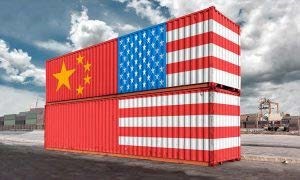 On March 8, 2018, President Trump issued Executive actions relating to the adjusting of imports of steel and aluminum into the United States. These actions were issued under the authority of Section 232 of the Trade Expansion Act of 1962, which allows for the president to unilaterally adjust tariffs upward when he deems it a national security issue. These tariff adjustments for additional import duties for steel mill and aluminum articles went into effect March 23, 2018. Subsequent to that initial action, several additional executive actions have been issued by the President resulting in steel duties of 25 percent and aluminum duties of 10 percent. As of June 1, 2018, all steel products originating in all countries of origin except Argentina, Australia, Brazil, and South Korea will be affected by the President’s executive actions. Those countries have agreed to quotas which as of this date have already been filled. Also, as of June 1, 2018 all countries of origin except Argentina and Australia will be affected by the President’s executive actions relating to aluminum imports. Again, those countries have agreed to quotas which as of this date have already been filled.
On March 8, 2018, President Trump issued Executive actions relating to the adjusting of imports of steel and aluminum into the United States. These actions were issued under the authority of Section 232 of the Trade Expansion Act of 1962, which allows for the president to unilaterally adjust tariffs upward when he deems it a national security issue. These tariff adjustments for additional import duties for steel mill and aluminum articles went into effect March 23, 2018. Subsequent to that initial action, several additional executive actions have been issued by the President resulting in steel duties of 25 percent and aluminum duties of 10 percent. As of June 1, 2018, all steel products originating in all countries of origin except Argentina, Australia, Brazil, and South Korea will be affected by the President’s executive actions. Those countries have agreed to quotas which as of this date have already been filled. Also, as of June 1, 2018 all countries of origin except Argentina and Australia will be affected by the President’s executive actions relating to aluminum imports. Again, those countries have agreed to quotas which as of this date have already been filled.
In a separate investigation, on March 22, 2018 the Office of the United States Trade Representative, Executive Office of the President issued findings into China’s acts, policies and practices related to the transfer of intellectual property and innovation under section 301 of The Trade Act of 1974.
To summarize the 215-page investigative report, Section IV.D of the report stated the following:
“China has engaged in acts, policies, and practices that are unreasonable, and that burden U.S. commerce. The market-distorting acts, policies, and practices of the Chinese government in technology-focused sectors impose significant costs and risks on U.S. industry. They undermine the ability of U.S technology companies to innovate and adapt, and threaten the long-term competitiveness of U.S. industry”.
As a result of the findings, over the next several months the President compiled a list of Chinese imports subject to additional duties:
- List # 1 listed 870 imported items from China-additional duty of 25 %
- List # 2 listed 302 imported items from China- additional duty of 25 %
- List # 3 listed 6,387 imported items from China- additional duty of 10 % or 25 %
These additional duties imposed on Chinese imports are, in effect, meant to level the playing field for U.S. manufacturers. However, in many cases there are exceptions, and the “one size fits all” fix to leveling the playing field is in some ways too simplistic a solution. The good news in all this is that there are exclusions that can be filed within the comment period stated in the Federal Register Notice.
If your company imports products from China, and you think you may be impacted by these additional duties, you must move quickly. For items on “List # 3” the period to file a comment has been extended to September 6, 2018. All 6,387 items on the list will be significantly impacted by higher rates of duty that you, the importer will have to pay.
For more information contact Glenn at: glenn@foreigntradezonesolutions.com or call Glenn at 603-957-8247.
 Last week I wrote about
Last week I wrote about  When we think of free trade we typically think in terms of a trade pact with low barriers and tariffs enacted and ratified between two or more countries in an equitable manner which will benefit each signatory country. Or, we may think of the World Trade Organization, (WTO) and all the participating nations of the world which belong to the WTO.
When we think of free trade we typically think in terms of a trade pact with low barriers and tariffs enacted and ratified between two or more countries in an equitable manner which will benefit each signatory country. Or, we may think of the World Trade Organization, (WTO) and all the participating nations of the world which belong to the WTO.